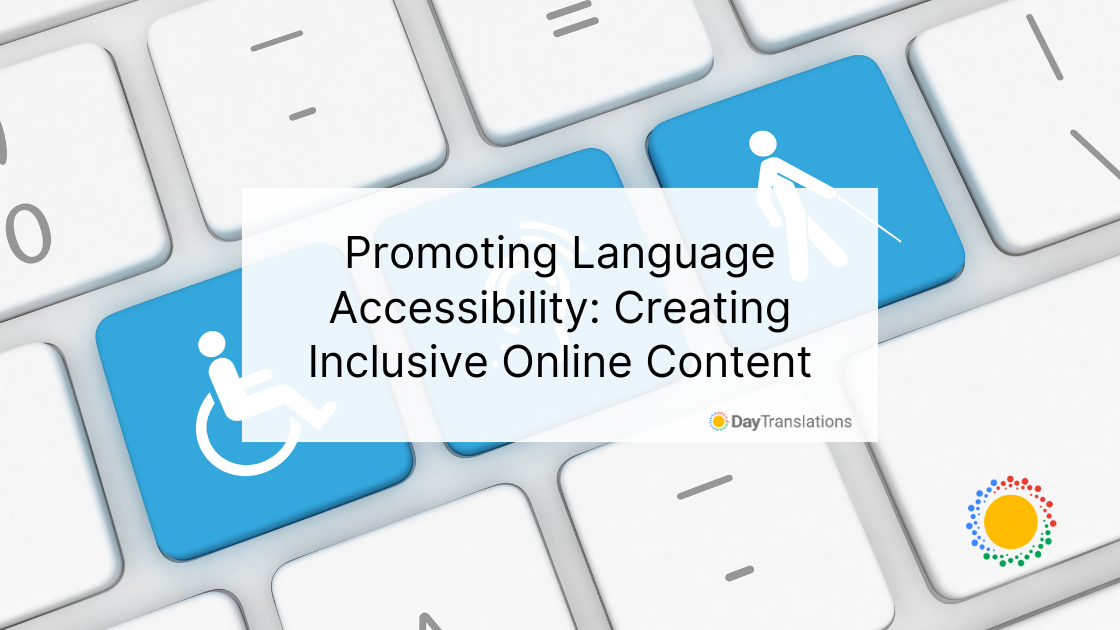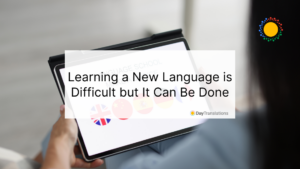Inclusive content goes beyond a single initiative or intention; it is an ongoing and intentional effort that demonstrates a commitment to equity. By striving for inclusivity, we create a safer and more welcoming experience for a wider range of people. While it’s impossible to cover every aspect of inclusive writing and design in a single article, we will focus on key elements of language accessibility and inclusive content on the web. This article takes a closer look at the four basic web content accessibility guidelines
The Four Principles of Language Accessibility and Inclusive Content
#1 – Web Accessibility Design
Language accessibility is a fundamental aspect of inclusive writing. Every element on your website, including navigation and text, should be accessible to as many people as possible. Here are some essential considerations:
Check Compatibility with Screen Readers and Assistive Technologies
Ensure screen readers can interact with every page on your site. A screen reader is vital for individuals with visual impairments and learning disabilities that might not be able to otherwise consume your audio and video content. Test your site using tools like Assistive Labs, NV Access for PCs, or VoiceOver for Macs to ensure the digital content on your web pages allow equal access for all audience members.
Use Captions
Adding captions to videos and other digital content is beneficial not only Deaf and hard of hearing visitors but also those who experience sensory overload. Captions help promote accessible content on search engines and enhances the digital accessibility score of your website. Tools like Kapwing simplify the process of adding captions.
Add Keyboard Navigation
Incorporate keyboard navigation into your site’s design. Navigating the site using a keyboard or voice commands enables individuals with limited mobility, tremors, vision impairments, and more to access your content without relying on a mouse. You can test keyboard navigation by trying it out yourself, following the instructions provided for Mac and Windows.
Avoid Excessive Motion in Design Elements
Excessive motion in design elements can be distracting or harmful for individuals with vestibular disorders, epilepsy, photosensitivity, and ADHD. If you use animations, include motion warnings and provide an option to disable moving elements.
Be Mindful with Colors
Use color contrast-checking tools such as Tanaguri Contrast Finder, WebAIM Contrast Checker, and Webflow Vision Preview Mode to ensure that your text is easily readable. You also want to avoid using color as the sole means of conveying information, as not everyone perceives colors in the same way. For example, avoid removing underlines from links while relying solely on color to indicate their status.
#2 – Inclusive Writing
In addition to the presentation of text, the way you write it plays a crucial role in creating inclusive content. Writing with the principles of inclusive language in mind is an ever-evolving practice influenced by language, references, and formatting. Consider the following guidelines:
Avoid Gendered Language
Words and phrases like “ladies and gentlemen,” “mankind,” and “businesswoman” are needlessly gendered and exclusionary, and they can easily create accessibility issues. Replace them with gender-neutral workos alternatives such as “folks,” “human beings,” and “business person.”
Dodge Negative Connotations
Steer clear of using terminology that carries negative connotations. Certain phrases that may seem harmless actually have origins rooted in harmful historical events and beliefs. For example, the terms “blacklist/whitelist” make use of discriminatory metaphors associated with race, “blindspot” relates to vision-related disabilities, and the term “womxn” was initially coined with the intention of excluding trans women. It is important to be mindful of the impact of such language and opt for alternatives that do not perpetuate exclusion or harm.
Tread Lightly with Idioms
Be cautious with idioms and ability-specific calls to action. Many idioms can be hurtful and exclusionary, such as using “that’s crazy” in reference to mental and psychiatric disabilities. Whenever possible, strive for specificity. Use “block/permit” instead of “blacklist/whitelist” and describe a situation as “unheard of” instead of “crazy.” Invite people to “explore” your services rather than “see” them.
#3 – Diverse References
Inclusive content extends to the references you make. Avoid leaving people guessing or feeling excluded by considering the following:
Expand Beyond Western Norms
Overreliance on references from a single culture can not only exclude people but also cause confusion. For example, the phrase “Turkey Race” may conjure images of Thanksgiving 5K runs in the United States, but in Puerto Rico, it refers to a tradition where people race to win a literal frozen turkey. These words hold different meanings in different contexts. Similarly, diversify the names used in your examples. Instead of solely relying on names like “John Smith” and “Jane Doe,” include names such as Sade, Asim, Fatima, or Tâm. Avoid associating examples with specific genders.
Deploy Diverse Imagery
When individuals see themselves represented in images, it not only acknowledges their existence but also empowers them to feel capable and included. Lack of diverse imagery can have the opposite effect, leaving individuals feeling excluded and unwelcome. Feature photos of people from different cultures, backgrounds, abilities, presentations, and sizes. Ensure that your content portrays a wide range of people engaged in various situations, occupations, and activities.
#4 – Accessible Writing and Formatting
Making your content accessible involves more than just the words themselves; it also encompasses formatting. Consider the following tips:
Deploy Easily Scannable Formatting Techniques
This benefits individuals with dyslexia, ADHD, and learning disabilities, as well as improves search engine optimization. Incorporate elements such as block quotes, clear headers, and bulleted lists to break up large blocks of text.
Carefully Consider Font Choices
Certain typefaces offer better accessibility compared to others, influenced by factors such as letter spacing, alignment, font size, and letter similarity. These elements contribute to the readability and legibility of the text, ensuring that it can be easily comprehended by a wider range of individuals. It’s important to consider these factors when selecting a typeface to enhance the accessibility of your content. San serif and slab serif fonts generally strike a better balance in terms of accessibility compared to more intricate or decorative typefaces. Comic Sans, despite its reputation, is actually one of the more readable fonts for individuals with dyslexia.
Inclusive Content and Language Accessibility Efforts Are Ongoing
Creating inclusive content requires ongoing dedication towards language accessibility. Continuously revisit the principles outlined in this article and apply them to your work. Keep in mind that the purpose of inclusive content is not to make everyone adore your offerings, but rather to offer everyone an equal opportunity to decide whether they want to engage with them. The focus is on providing a welcoming and accessible environment where individuals can make informed choices based on their own preferences and needs.














Sorry, the comment form is closed at this time.